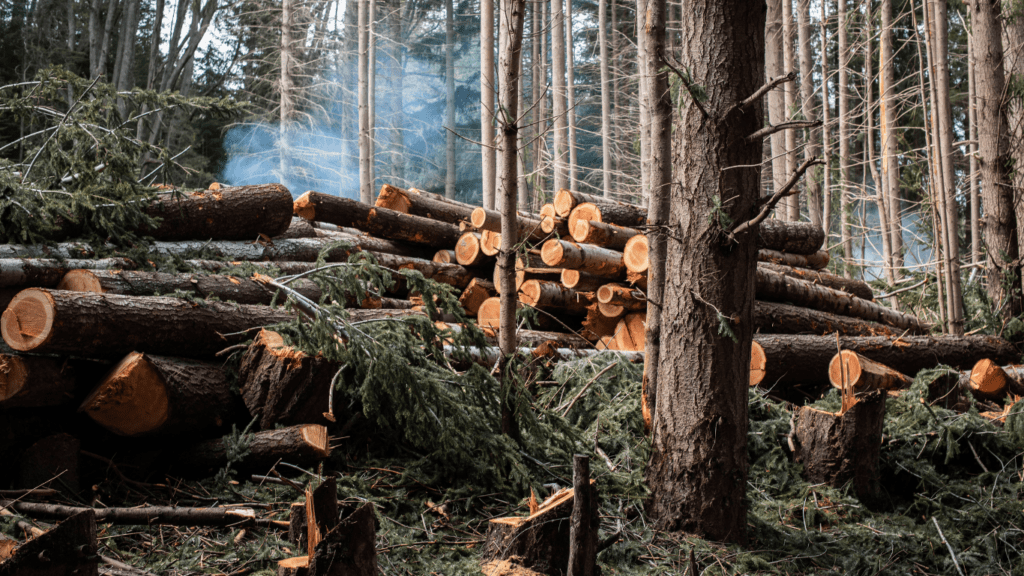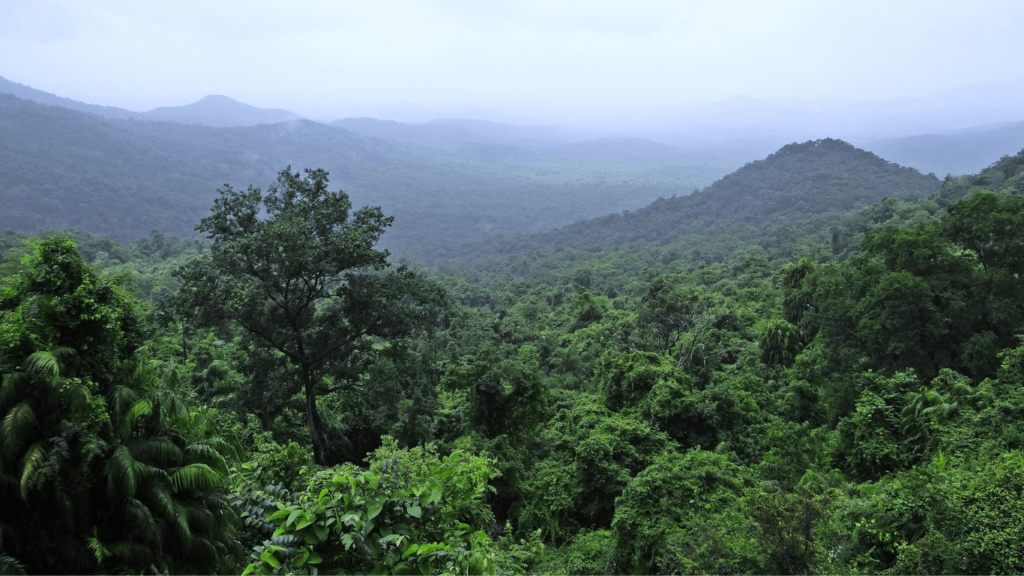Importance of Forests
Forests play a crucial role in maintaining the planet’s health. They act as major carbon sinks, absorbing approximately 2.4 billion metric tons of carbon dioxide each year, according to the Food and Agriculture Organization (FAO). This absorption helps reduce greenhouse gas concentrations in the atmosphere. Forests also regulate temperatures by providing cooling through transpiration and shading.
Forests are critical for conserving biodiversity. They house 80% of terrestrial species, including insects, birds, and mammals. Biodiverse ecosystems contribute to resilience against environmental changes and extreme weather events. Species-rich forests also promote ecosystem services like pollination and seed dispersal.
Forests protect water resources. They maintain watershed health by filtering rainwater, reducing erosion, and minimizing sediment runoff. Healthy forests ensure cleaner water for human consumption, agriculture, and industry. The United Nations Environment Programme (UNEP) states that forested watersheds supply 75% of the world’s accessible freshwater.
Forests provide livelihoods for millions globally. Over 1.6 billion people depend on forests for food, medicine, shelter, and employment. Non-timber forest products (NTFPs) like;
- fruits
- nuts
- medicinal plants
offer economic opportunities, especially for indigenous and rural communities.
Forests’ value extends beyond environmental contributions. They offer recreational, cultural, and spiritual benefits. Many communities revere forests as sacred spaces. Recreational activities like hiking and birdwatching not only promote physical health but also foster an appreciation for nature.
Forests are indispensable in combating climate change by sequestering carbon, conserving biodiversity, protecting water resources, and supporting livelihoods. Their multifaceted benefits underscore the urgency of preserving and restoring forested landscapes globally.
Carbon Sequestration
Forests play an essential role in mitigating climate change by capturing carbon dioxide from the atmosphere. This process—known as carbon sequestration—helps lower greenhouse gas levels.
How Forests Capture Carbon
Trees absorb carbon dioxide during photosynthesis. Chlorophyll in leaves captures sunlight and converts it into chemical energy. This energy combines with carbon dioxide from the air and water from the roots to produce glucose, storing carbon in the form of wood, leaves, and roots. For instance, an average mature tree can absorb 48 pounds of carbon dioxide annually. Forest soil also sequesters carbon through organic matter decomposition, locking it underground.
Impact on Global Carbon Cycle
Forests influence the global carbon cycle significantly. They store about 45% of terrestrial carbon. By absorbing approximately 2.4 billion metric tons of carbon dioxide annually, forests act as a sink that mitigates climate change. Tropical forests, such as the Amazon, are particularly crucial. They sequester large amounts of carbon but also release it during deforestation or forest degradation. Maintaining healthy, intact forests is vital for balancing the Earth’s carbon levels and addressing climate change.
Biodiversity and Ecosystem Services
Forests play a crucial role in sustaining biodiversity and supporting critical ecosystem services that are essential for both the environment and human life.
Habitat Provision
Forests serve as a habitat for numerous species, hosting approximately 80% of terrestrial animals and plants. These diverse ecosystems provide shelter, breeding grounds, and food sources for countless organisms. For example, the Amazon rainforest alone houses an estimated 400 billion individual trees and over 2.5 million insect species. The rich biodiversity found in forests contributes to ecosystem stability and resilience, ensuring that natural processes like nutrient cycling and pollination continue unimpeded.
Soil Conservation
Forests help conserve soil by preventing erosion and maintaining soil structure. Tree roots stabilize the soil, reducing the risk of landslides and sediment loss, while fallen leaves and organic matter enrich the soil with nutrients. In regions such as the Himalayas, forests play a vital role in preventing soil erosion caused by heavy monsoon rains. Healthy forest soils also promote water infiltration, reducing surface runoff and improving groundwater recharge. This vital function helps maintain agricultural productivity and water quality, benefiting both ecosystems and human communities.
Forest Management Practices

Effective forest management practices are crucial in combating climate change. Proper techniques can ensure forests remain resilient and continue their role in carbon sequestration and biodiversity conservation.
Sustainable Logging
Sustainable logging ensures timber harvesting aligns with forest regeneration principles. This practice maintains ecological balance and prevents excessive carbon release. For instance, selective logging targets specific trees, minimizing habitat disruption and preserving canopy cover. Allowing forests sufficient recovery time between logging cycles ensures long-term productivity and stability. Adopting reduced impact logging (RIL) techniques, such as planning logging routes and avoiding excessive soil compaction, helps maintain forest health.
Reforestation and Afforestation
Reforestation and afforestation are vital for restoring deforested areas and expanding forest coverage. Reforestation involves planting native species in degraded lands to restore natural habitats and improve carbon sequestration. Afforestation targets non-forested areas, increasing overall forest area and enhancing biodiversity. Both methods strengthen ecosystems, support wildlife, and contribute to climate change mitigation. Programs like the Bonn Challenge aim to restore 350 million hectares of forests by 2030, demonstrating the global commitment to forest restoration.
Using these forest management practices, we can ensure forests remain indispensable allies in our fight against climate change.
Threats to Forests
Forests face numerous threats that imperil their ability to combat climate change. Two primary threats include deforestation and the impacts of climate change.
Deforestation
Deforestation represents one of the biggest threats to forests. It involves the large-scale removal of trees and forested areas, often for agriculture, urban development, or logging. Approximately 18 million acres of forest are lost each year, according to the United Nations’ Food and Agriculture Organization (FAO). Brazil’s Amazon rainforest experiences significant deforestation for cattle ranching and soybean farming. This loss not only releases stored carbon dioxide but also disrupts ecosystems and displaces species. Effective strategies to combat deforestation include enforcing strict regulations, promoting sustainable land use practices, and supporting reforestation initiatives.
Climate Change Impacts
- Climate change exacerbates the threats to forests.
- Rising temperatures, shifting precipitation patterns, and extreme weather events weaken forest ecosystems.
- Increased temperatures can lead to more frequent and severe wildfires, as seen in California’s forest fires.
- Prolonged droughts can stress trees, making them more susceptible to pests and diseases, such as the bark beetle infestations in North American forests.
- Altered precipitation patterns can lead to either excessive flooding or drought, both of which negatively impact forest health.
- Adaptive forest management practices, like monitoring ecosystems and enhancing biodiversity, can help mitigate these impacts.
Global Initiatives and Policies
Efforts to combat climate change have led to various global initiatives and policies. These measures aim to protect forests, reduce deforestation, and enhance reforestation efforts.
International Agreements
Several international agreements address forest conservation and climate change. The Paris Agreement, signed by 196 countries in 2015, aims to limit global warming to below 2 degrees Celsius, with an emphasis on reducing carbon emissions. Under this agreement, countries commit to Nationally Determined Contributions (NDCs) that include forest protection and reforestation initiatives.
The United Nations’ REDD+ program (Reducing Emissions from Deforestation and Forest Degradation) encourages developing countries to manage forests sustainably, reduce emissions, and enhance carbon stocks. The program provides financial incentives for conservation efforts, linking forest management with climate goals.
Another noteworthy initiative is the Bonn Challenge, launched in 2011, which aims to restore 350 million hectares of degraded and deforested lands by 2030. This restoration enhances biodiversity, improves water resources, and increases carbon sequestration.
National and Local Strategies
Countries also implement national and local strategies to complement international efforts. In Brazil, the Amazon Fund finances projects that prevent deforestation, promote sustainable forest management, and support scientific research. This fund, established in 2008, has received significant contributions, highlighting global cooperation.
In Indonesia, the government has enacted moratoriums on new logging and plantation concessions in primary forests and peatlands. These moratoriums aim to reduce deforestation rates and preserve critical habitats. Additionally, reforestation projects in degraded areas contribute to national climate goals.
At the local level, community-based forest management (CBFM) empowers indigenous and local communities to manage forests sustainably. Programs in Nepal and the Philippines demonstrate that involving local stakeholders leads to better forest conservation outcomes. These initiatives promote sustainable livelihoods while ensuring forest health.
Legal frameworks and policy incentives also play a crucial role. Governments offer tax incentives and subsidies for reforestation and sustainable management practices. These measures motivate private sector participation in forest conservation efforts, further aligning economic and environmental goals.



 Lead Forest Survival Specialist & Outdoor Educator
Timothy Peters is Whisper Forest Ways’ resident expert on wilderness survival and all things related to thriving in the outdoors. With a background in environmental sciences and over a decade of hands-on survival training, Timothy combines scientific knowledge with practical experience to teach readers essential survival skills, such as shelter building, fire making, and foraging. His approach emphasizes respect for the natural world and sustainability, ensuring that all of his methods encourage low-impact interaction with the environment. Whether you’re new to outdoor adventures or a seasoned explorer, Timothy’s detailed guides and insights provide invaluable knowledge for safely and confidently navigating the wild.
Lead Forest Survival Specialist & Outdoor Educator
Timothy Peters is Whisper Forest Ways’ resident expert on wilderness survival and all things related to thriving in the outdoors. With a background in environmental sciences and over a decade of hands-on survival training, Timothy combines scientific knowledge with practical experience to teach readers essential survival skills, such as shelter building, fire making, and foraging. His approach emphasizes respect for the natural world and sustainability, ensuring that all of his methods encourage low-impact interaction with the environment. Whether you’re new to outdoor adventures or a seasoned explorer, Timothy’s detailed guides and insights provide invaluable knowledge for safely and confidently navigating the wild.
